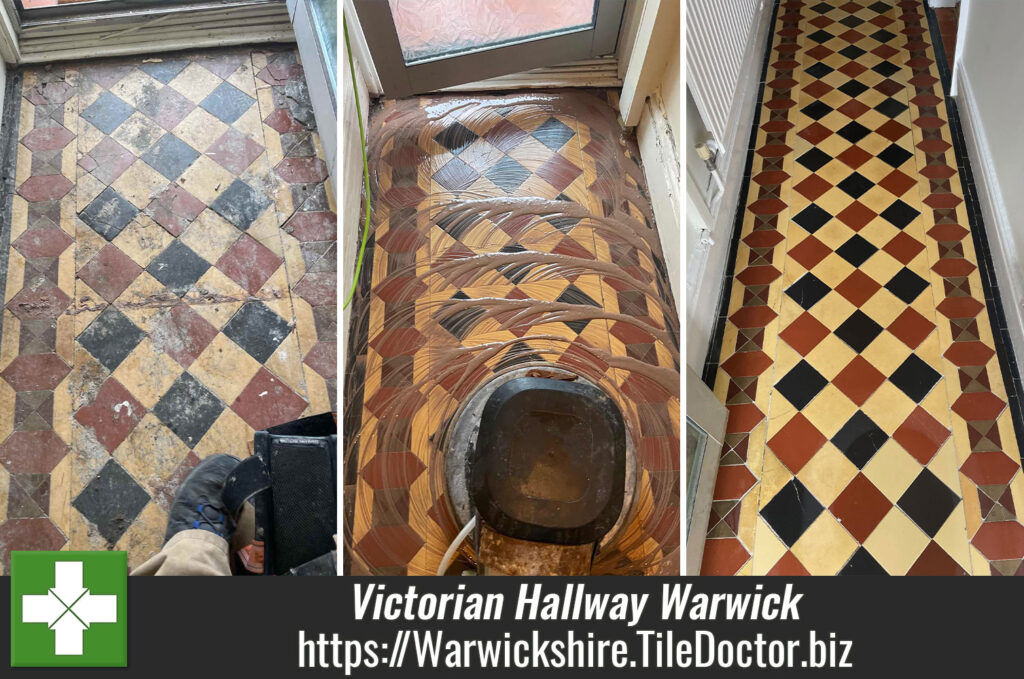Victorian Hallway restoration in Warwick
I took these photographs of an original Victorian tiled floor at a 1900’s house in Warwick, near the racecourse. The floor had been covered in vinyl for many years and had decided to replace it. However, after realising the value a restored period floor can add to a property, they investigated having it restored and consequently contacted Tile Doctor.
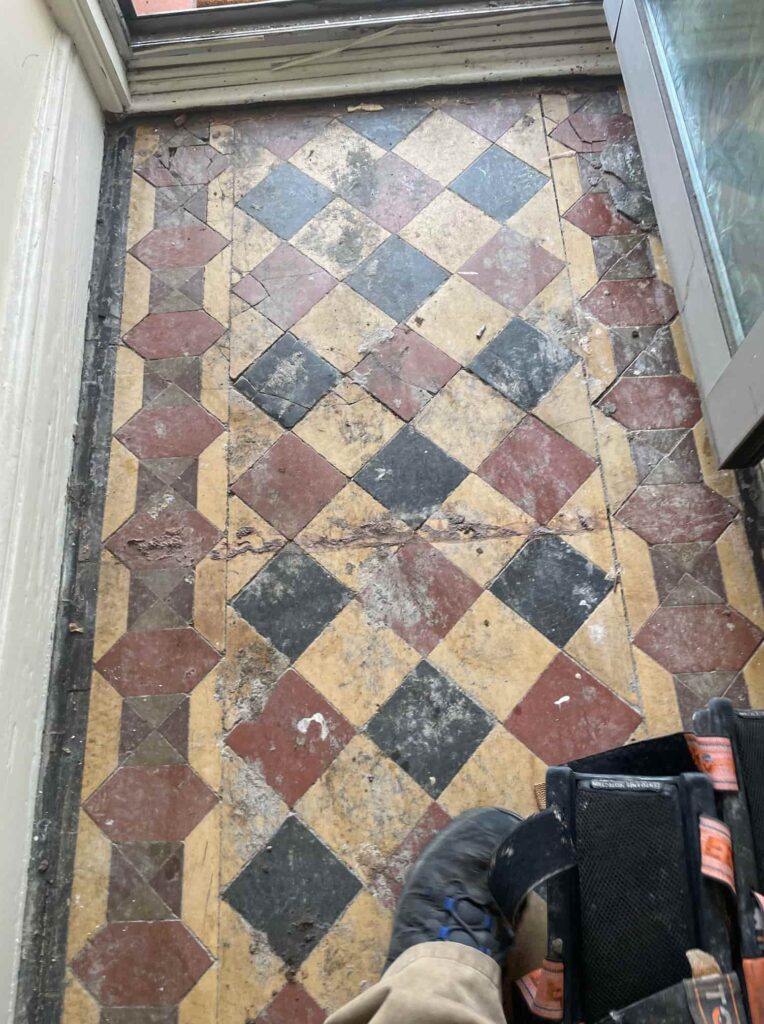 |
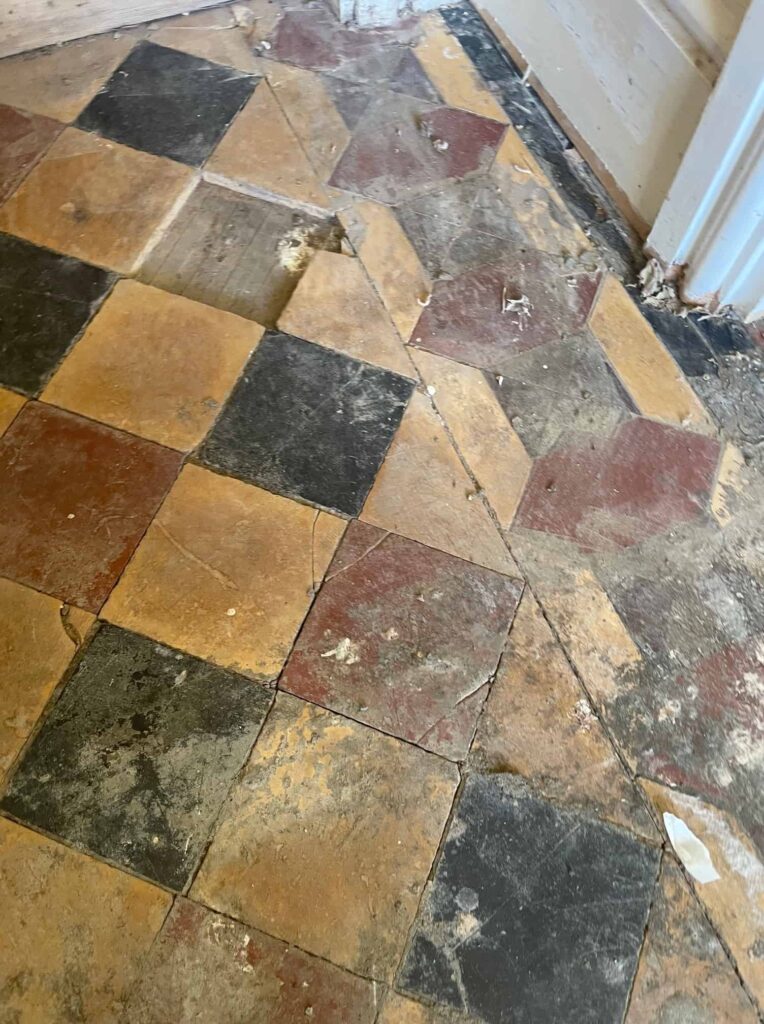 |
Before quoting I went over to the house to survey the floor and work out what would be needed to renovate it. I could see that the main issues would be the self-levelling screed and adhesive that had been used to secure the vinyl. There were also numerous tiles that would need replacing. None of this concerned me though as I have worked through these sorts of issues many times before.
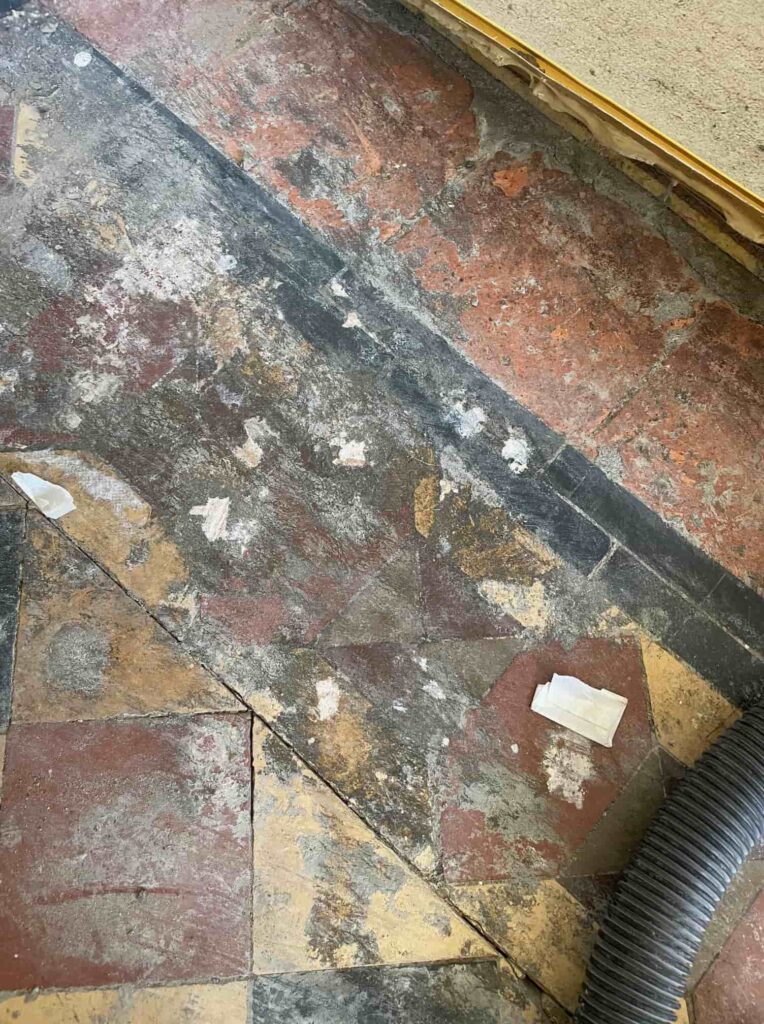
I reassured the client that the original floor could absolutely be restored back to its original condition and worked out a price for the work which would take two days, one to clean/repair, and one to seal. My quote was accepted, and a date was arranged for my return.
Cleaning and Repairing a Victorian Tiled Hallway Floor
Old floors like this one don’t have a damp proof membrane under the tiles so I was immediately concerned about increasing the moisture levels in the floor itself, especially as it was previously covered in vinyl which can prevent moisture rising through the floor. As a result, I decided to use as little water as possible when cleaning the floor by using low moisture gel cleaning products.
To remove the screed and adhesive I applied Tile Doctor Acid Gel to the floor and then left it to soak in for ten minutes before working it in with a 100 and then 200-grit abrasive pad. The acidic nature of the gel is really good at breaking down cement and mineral based contaminates allowing them to be removed more easily. After each pad I used a little water to help sluice away the soiled gel and extracted with a wet vacuum.
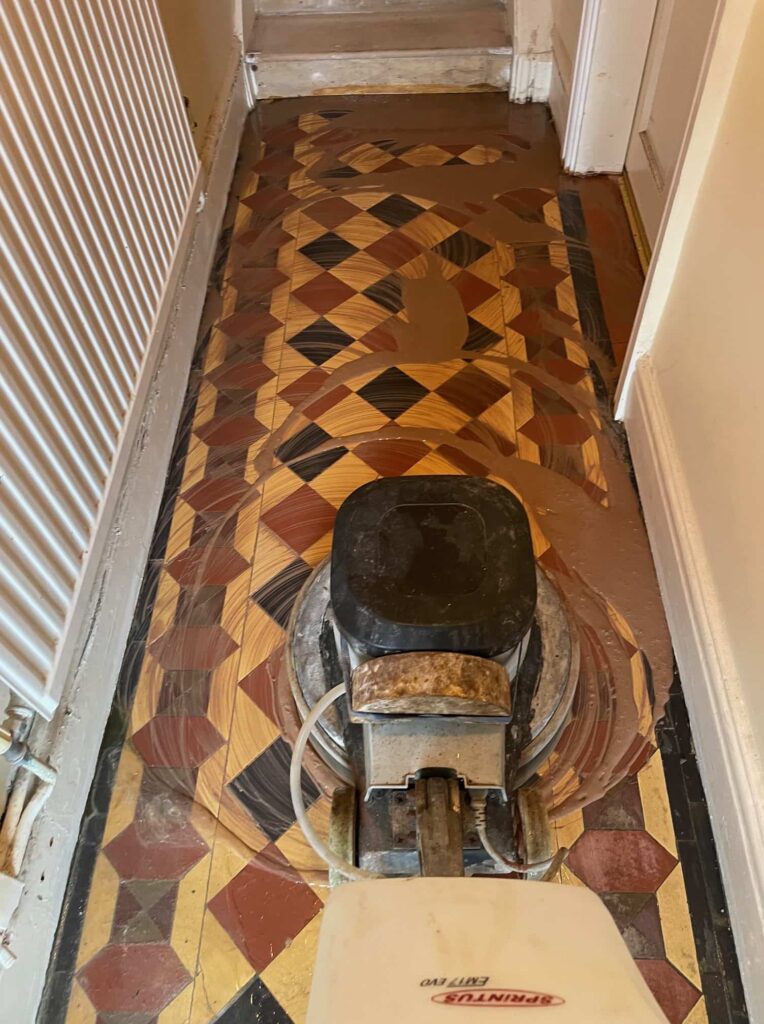 |
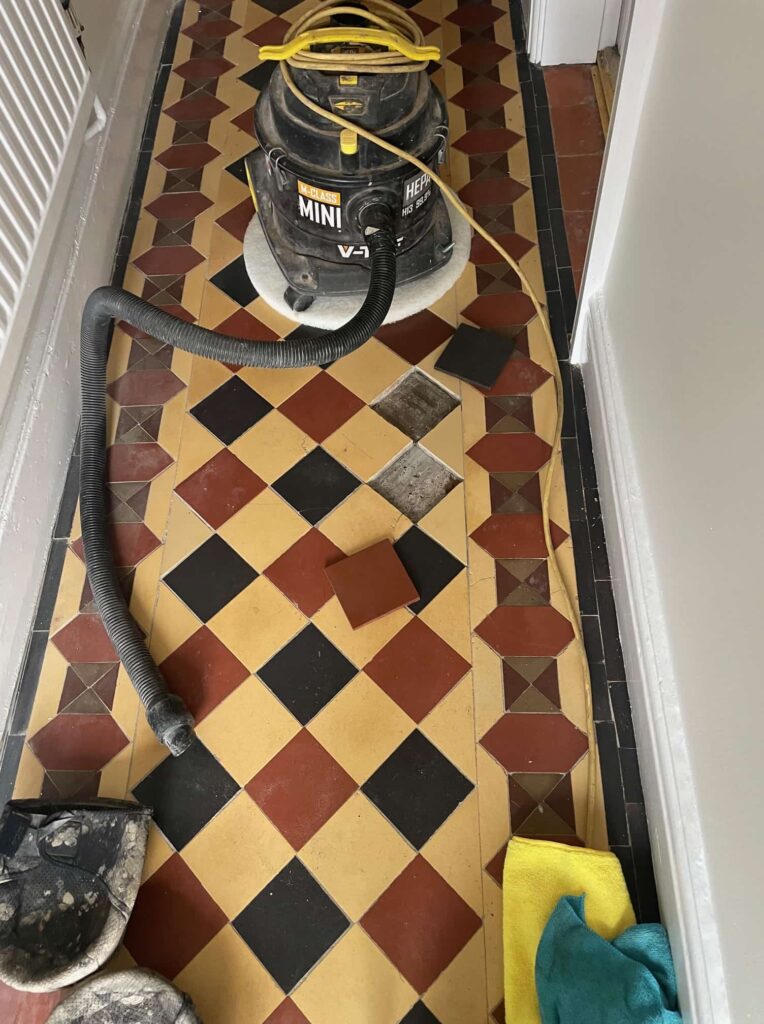 |
After cleaning I then turned my attention to the 23 or so tiles that were either loose or in a bad condition and needed changing. These were carefully removed, and the foundation cleaned up before being replaced with a matching tile that I had managed to source earlier. The replacements were secured with fresh adhesive and then grouted. The floor was then given a quick clean and then left to dry out fully overnight.
Sealing a Victorian Tiled Hallway Floor
The next day I returned and sealed the floor with Tile Doctor Colour Grow which leaves a matt finish and contains a colour enhancing formula that really brings out the colours in the tile. Additionally Colour Grow is also fully breathable and will allow moisture to rise unhindered through the floor and evaporate at the surface, a crucial feature when sealing old floors like this one.
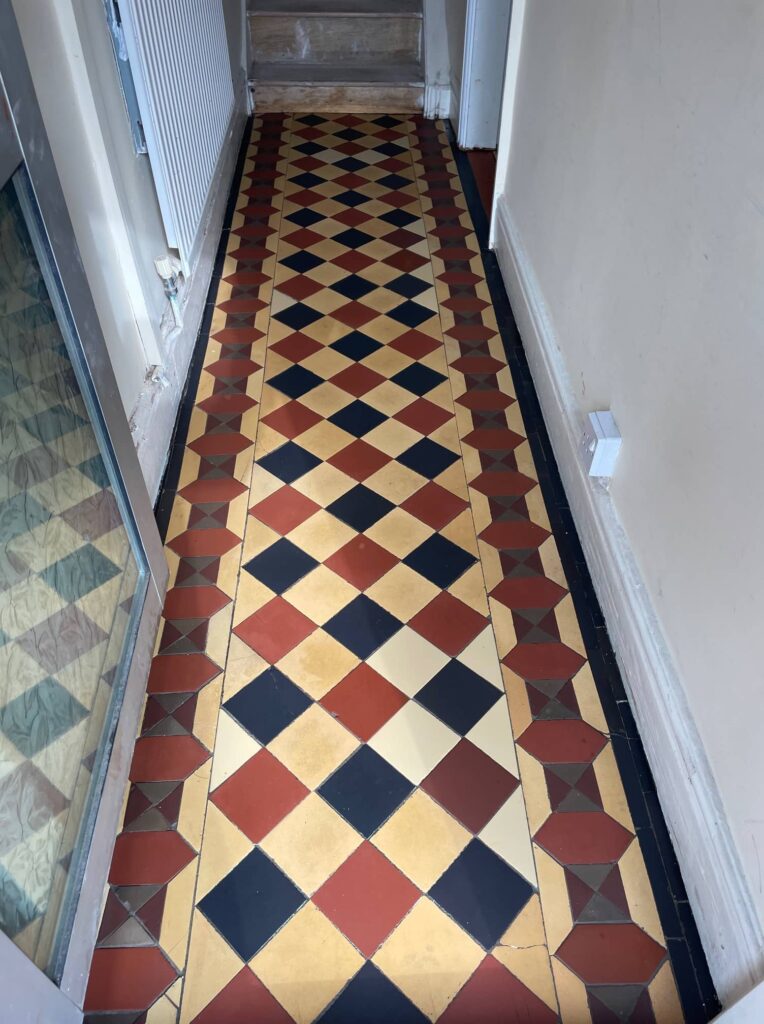 |
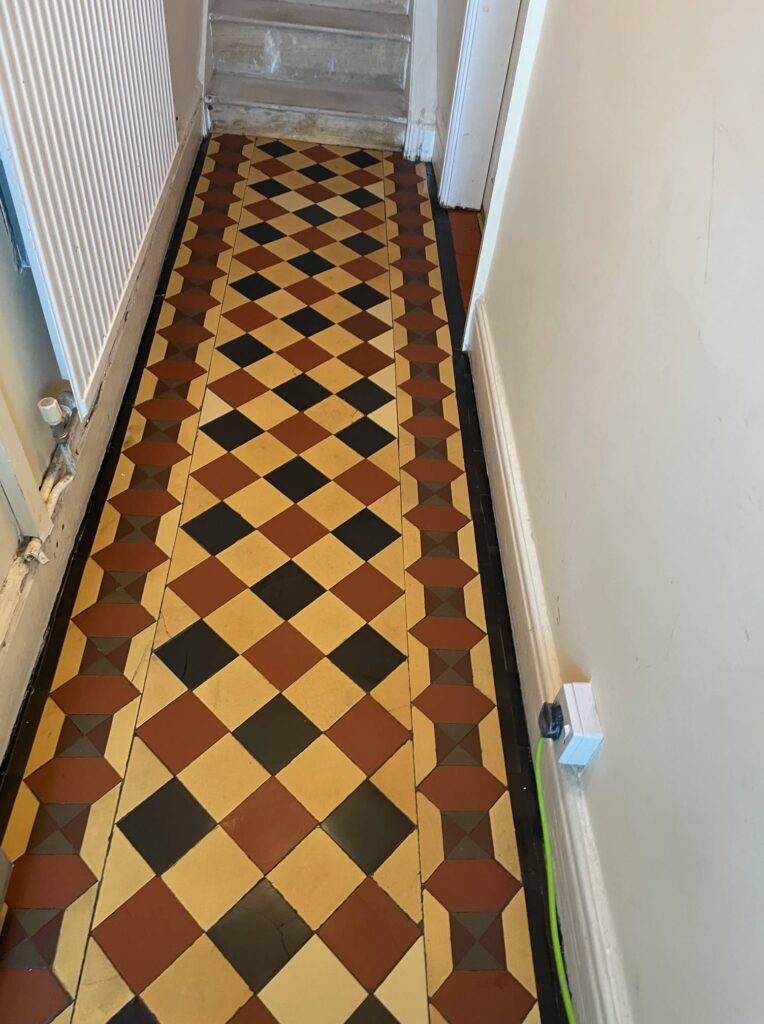 |
For aftercare I recommended Tile Doctor Neutral Tile Cleaner which is an effective tile cleaner that is safe to use on sealed tiled floors.
Professional Restoration of a Victorian Tiled Hallway in Worcestershire
Victorian Hallway restoration in Warwick Read More »

